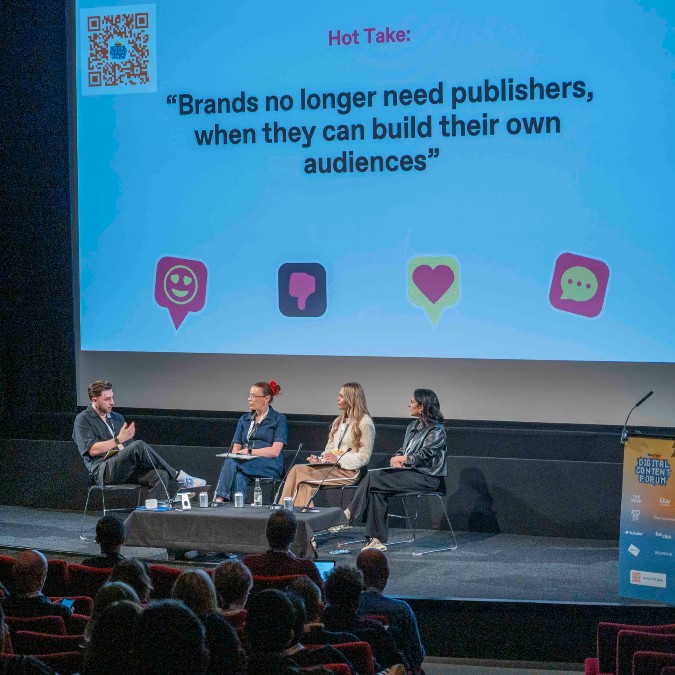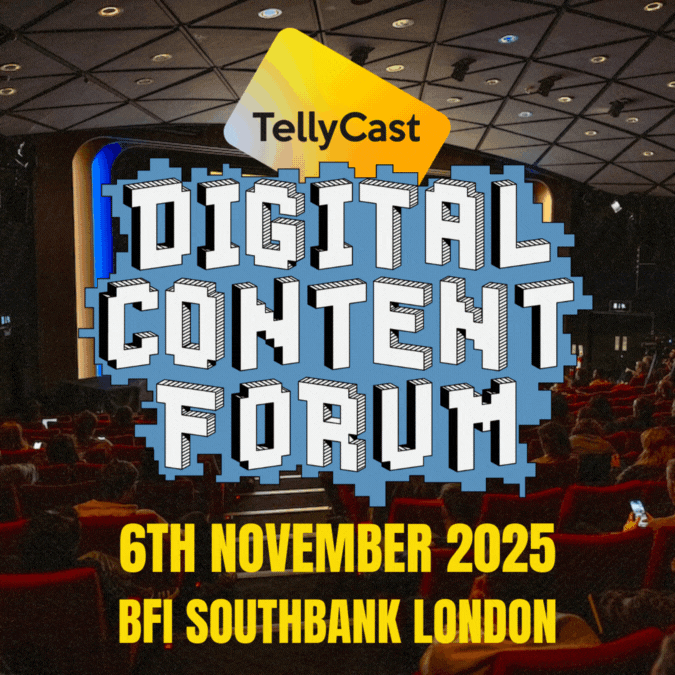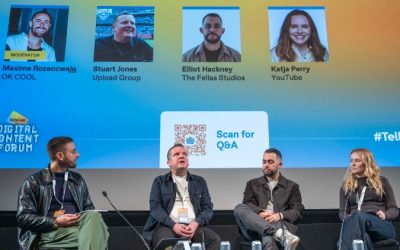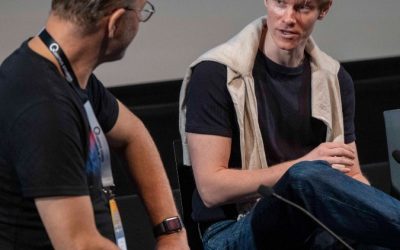What’s next for social branded content? A session hosted by Fan Club at TellyCast’s Digital Content Forum 2025 today mulled a collection of hot takes, with a panel tasked with agreeing or disagreeing with each – and saying why.
Fan Club’s Sonny McLean moderated the panel, which included Essence MediaCom’s Claire Prince, Spectrum Brands’ Hannah Hamer and E.ON Next’s Emma Webster.
The first hot take was that brands no longer need publishers, when they can build their own audiences. The panel generally disagreed, while being excited about the ways brands can go direct to audiences.
“I think there is room for both for sure, but working with partners – publishers who have their own audience – and connecting the two is very additive,” said Prince.
Hamer also disagreed. “As a brand we’re trying to grow, but we do need media,” she said. “Working with media agencies enables us to reach that wider audience.”
Webster chimed in. “There is definitely a place for both,” she said. Brands can build their own content channels and put out consistent content to attract an “owned audience”, she noted, but media partners remain important too.
“The world is changing. People want reactive, engaging entertainment content, and you have to move fast and be agile as a business to understand where that’s going,” added Hamer.
Can all brands connect directly to their audiences? “100%,” said Prince. “I want useful content from all of the companies I buy from about how to use those products… I’ll go to TikTok or YouTube and search for it, and I would totally go to the brand’s handle to see that content. And I’m 41! It’s not just for the Gen-Z or Gen-Alpha audience.”
The next hot take: authenticity is overrated. Webster agreed. “The term ‘authenticity’ has become almost a buzzword that people love to use, and it has ironically almost become inauthentic to use that,” she said. “Brands sit around the table saying ‘how can we be authentic… what’s the biggest cause we can attach ourselves to?’ That’s what people can see through.”
Hamer said that actual authenticity – not just saying it, but being it – remains valuable and important. “From my perspective, we have to be authentic as a brand,” she said. “It’s got to be able to resonate, and your audience has got to be able to trust you… We need to make sure we’re transparent: we are who we say we are. And that goes for the content creators we work with too… If it isn’t relevant, people see right through it.”
Prince agreed that the word’s overuse is the problem. “I think the word has become meaningless. It’s become one of those things you say over and over again, like ‘purpose’, and it doesn’t mean anything to anyone. Maybe swap it with ‘trustworthiness’” she said. “It should come naturally,” added Hamer.
The next hot take: Branded entertainment is already proving more popular than many originally-commissioned shows. McClean noted the success and expansion of Waitrose’s Dish podcast as a prime example of this.
Webster agreed with the premise. “As long as the content is good, people don’t really care who it’s come from. You watch Dish or listen to it and you don’t think it’s all an advert for Waitrose… if brands are brave enough to fund content that has a really strong story and isn’t just sales-led… then people will connect with it.”
Hamer also agreed. “I don’t think they really care where it’s come from,” she said of consumers, adding that product placement can work here as long as it serves the story.
Prince suggested that the question is null and void. “There really is no difference: I want to get to the point where something that’s created or part-funded by a brand is winning BAFTAs and Oscars!”
The next hot take: Purpose is out, play is in. McLean talked about how brands had chased purpose for years, but that playfulness may be the bigger trend now. Prince said that it comes down to how you define purpose however. “Purpose means different things to different people. I don’t think everything has to be finger-waggy and getting behind a movement… purpose can be just to cheer someone up.”
Hamer offered a yes-and-no answer. too: that there is always a goal or a purpose in mind for a campaign, but the storytelling bringing it to life is what’s important. “Brands can sometimes get on a bit of a soapbox and think they should be telling you what you should and shouldn’t be doing,” she said.
“It can become performative purpose,” agreed Webster. “It’s about distinguishing what actually IS your purpoe. And people just want to be entertained, they don’t want to be lectured. If every piece of content starts sounding like a TED Talk, people are going to switch off.”
The next hot take: AI won’t kill creativity, but it will kill bad content. The panel had mixed views.
“AI? It’s great as a prompt, and you can work with AI and enhance AI, but it needs to be developed by humans,” said Hamer, who cited a recent Russell Hobbs project using AI to design a kettle. “But the humans were still needed to bing it to life… There is a place for it [AI] but it’s just how you use it.”
Prince disagreed with the hot take. “Bad content exists with or without AI. There’s a load or rubbish out there!” she laughed. And Webster also disagreed. “I think it’s going to push for better creativity. There’s going to be so much content… the brands that use it the best will be using it to their advantage, working with it but bringing that human element into it.”
“It gets things wrong,” noted Prince. “Although so do humans!”
Finally the panel gave some hot takes of their own. Hamer suggested that the future of social branded entertainment will be more about celebrating small, everyday moments: seeing “behind the scenes” of people’s lives.
Prince referred back to a claim in a previous session that in the AI age, humans should think of themselves as luxury goods rather than commoditised assets. “We should be more Louis Vuitton and less Shein. Sorry, if anyone from Shein is here! Let’s not just make things for the sake of making it… Just because you can make something doesn’t mean you should.”
Webster talked about creators and talent, and how working with influencers has become oversaturated. “The future of branded entertainment will actually be using brands’ own communities as their influencers,” she said.





